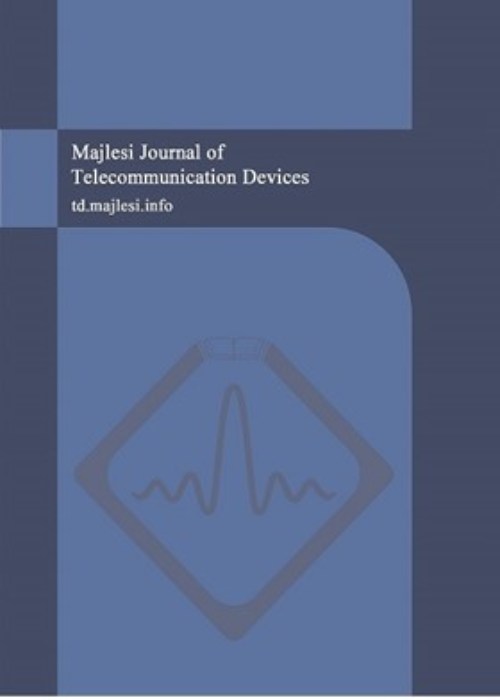فهرست مطالب
Majlesi Journal of Telecommunication Devices
Volume:2 Issue: 1, Mar 2013
- تاریخ انتشار: 1392/03/14
- تعداد عناوین: 7
-
Pages 1-5In this paper a low-power low-voltage CMOS operational amplifier (op amp) using sub-threshold region of MOSFET for bio-medical instrumentation operating with a 0.4 V supply is described. A two stage operational amplifier is designed and simulated using 0.18 μm CMOS technology. Two types of low-power low-voltage design techniques (a) bulk-driven (b) dynamic threshold voltage MOSFET (DTMOS) are used. With bulk-driven technique, the open loop gain is 69.88 dB, the unity gain-bandwidth (UGBW) is 87.1 kHz, CMRR obtained is 83 dB and phase margin is 88.78 degree with 10pF load. The power consumption is 1.8 μW. With DTMOS technique, the open loop gain is 83.31 dB, the unity gain-bandwidth is 758.6 kHz, CMRR obtained is 157.1 dB and phase margin is 71.5 degree with 10pF load. The power consumption is 1.8 μW. DTMOS technique provides high unity gain-bandwidth and high open loop gain as compared to bulk-driven technique.
-
Pages 7-9In the last two decades, new allotrope of carbon and other related Nano structures have been discovered. Graphene is a Two-dimensional of single layer of graphite, and the starting point for many of the Nano-carbon material that is generally called Nano-graphite. This material has a different atomic structure and they bring a lot of electronic features. Graphene''s electrical, mechanical and heat properties are very well. The extraordinary properties of graphene have led to extensive research done in recent years. In this paper, Brief about graphene, its applications and its promising future is discussed.
-
Pages 11-15In this paper, an ultra-low power ultra-low voltage five-stage low frequency voltage–controlled single-ended ring oscillator using dynamic threshold voltage MOSFET (DTMOS) is presented. The proposed oscillator is designed and simulated using TSMC 0.18μm RF CMOS technology with 0.4 V power supply. In this design all transistors working at the sub-threshold (weak inversion) region. The output frequency ranges from 26.6-210.5 kHz with control voltages of 0 V to 0.4 V. Its power consumption and phase noise at a 100 kHz offset at the minimum(maximum) oscillation frequency is respectively 6.42nW (8.62 nW) and -120.5 dBc/Hz (-113.15 dBc/Hz).
-
Pages 17-20Chaos is one of the most important phenomenons based on complex nonlinear dynamics. In this paper, we investgate chaos synchroniazation problems of a new 3D chaotic system.Based on the Lyapunov stability theory, a nonlinear control approach is presented for the synchronization between tow three-dimensional chaotic system. This system is a new three-dimensinal autonomous chaotiv system which is different from the other existing attractors and has larger Lyapunov exponent than the Lorenz system. In order to optimize this controller, Genetic algorithm is applied. Genetic algorithm detects the best optimized values for gain of this controller. Fitness function is also considered as Total Square Error between master and slave system. Numerical simulations show the effectiveness of the presented controller.
-
Pages 21-24Lead sulfide (PbS) nanostructures are one of the possible candidates to be used in modern optic devices. It can be deposited by various methods. Composition of the deposited layers and their optical properties can be determined by Raman spectroscopy. In this work, Raman features of PbS nanostructures are discussed in detail. Several different morphology of PbS nanostructures such as nonocubics, hexapod and octahedron was studied. Their size and morphologies are expressed and discussed about their Raman spectrum. In each case, represented the reason of the any Raman peaks and finally, it has been tried to be a comparison between them.
-
Pages 25-29We present a design thin film multi-cavity Fabry-Perot filter. These filters are most widely used filtration technologies that made possible technical advancement of modern optical communication system. This paper is concerned with a theoretical study to design and analyze this type of filter. A brief introduction to the thin film multi-cavity filter technology will be presented. The recent progress in design thin film multi-cavity technology will be reviewed. These designs consist of two material as high / low index. The wavelength range from 300nm to 500nm. The filter is to be coated on Fused Silica having index 1.55 and operates at normal incidence
-
Pages 31-37A fully integrated low-noise amplifier (LNA) with 0.4V supply voltage and ultra low power consumption at 1.5GHz by folded cascode structure is presented. The proposed LNA is designed in a TSMC 0.18 µm CMOS technology, in which all transistors are biased in sub-threshold region. Through the use of proposed circuit for gain enhancement in this structure and using forward body bias technique, a very high figure of merit is achieved, in comparison to similar structures. The LNA provides a power gain of 14.7dB with a noise figure of 2.9dB while consuming only 790µW dc power. Also, impedance matching of input and output of the circuit in its operating frequency is desirable and in the whole bandwidth of the circuit, input and output isolation is below -33dB.


